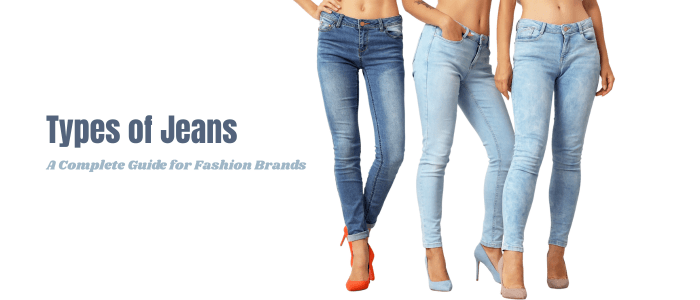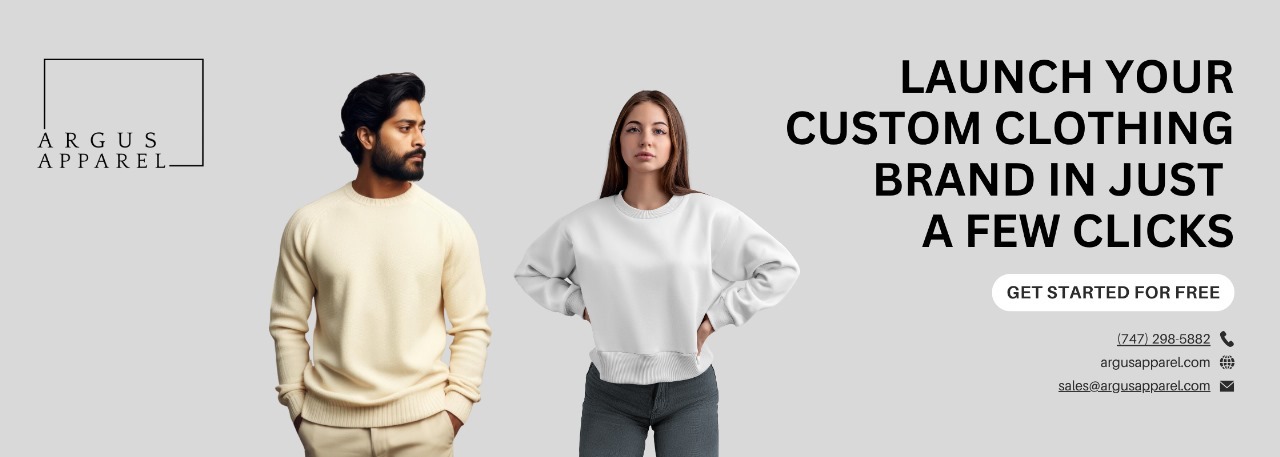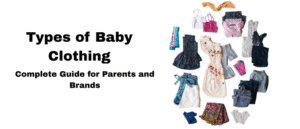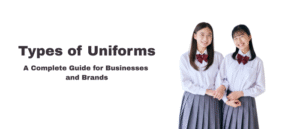Jeans have remained one of the most iconic and versatile pieces of clothing for decades. Loved for their durability, comfort, and endless variety, jeans are a staple in wardrobes across the world. For fashion brands in the USA, understanding the different types of jeans is more than just keeping up with consumer preferences; it’s about creating collections that resonate with buyers, strengthen brand identity, and stay competitive in a growing denim market.
At Argus Apparel, as a private label apparel company, we work closely with startups, private labels, and established brands to navigate these choices and design denim collections that align with both market demand and brand vision. Drawing from our experience in apparel manufacturing and trend analysis, we’ve created this guide to help fashion entrepreneurs understand the main types of jeans, the difference between denim fits and styles, and the key jeans trends for 2025 worth noting before launching a new line.
Understanding Jeans Fit vs. Style
When discussing denim, terms like fit, style, and cut often get mixed up. While they are closely related, each refers to a different aspect of how jeans are designed and worn. Understanding these differences is crucial for fashion brands, as it directly impacts product development and consumer buying behavior.
- Fit refers to the overall shape of the jeans and how they sit on the body. For example, skinny jeans hug their legs closely, while wide-leg jeans fall loosely from hip to ankle. Fit plays the biggest role in comfort and silhouette, making it the first factor most consumers consider when buying jeans.
- Style goes beyond the shape and focuses on the visual appearance. This includes details like distressing, raw finishes, acid washing, or selvedge edges. Style gives jeans their personality and allows brands to target different fashion segments, from casual streetwear to premium denim.
- Cut determines the outline or silhouette of the leg opening, such as bootcut, tapered, or flared. Even within the same fit, the cut can dramatically change how jeans look and feel.
For fashion brands, distinguishing between fit and style is not just technical; it’s strategic. Consumers in the U.S. typically start by selecting their preferred denim fits (skinny, straight, relaxed), then refine their choice based on styling details and finishes. Brands that understand this buying pattern can design collections that cover essential fits while experimenting with unique washes and finishes. A well-planned range that balances both fit and style ensures stronger customer appeal, better market positioning, and a competitive edge in the crowded denim market.
Popular Jeans Styles Based on Fits
Choosing the right fit is the most important step for consumers when buying jeans. The types of jeans based on fit define how they look and feel on the body, and each option appeals to different demographics and style preferences. For fashion brands in the U.S., offering a balanced mix of these denim fits ensures wider customer appeal and helps capture ongoing jeans trends in 2025.
Skinny Jeans
Skinny jeans are designed to hug the body closely from waist to ankle, creating a sleek and body-defining silhouette. While their popularity peaked in the early 2010s, they continue to hold strong in younger demographics and women’s denim collections. Their versatility makes them a go-to option for both casual streetwear and semi-formal styling when paired with heels or boots. In 2025, skinny jeans remain a wardrobe essential, though often reimagined with stretch fabrics for added comfort.
Slim Fit Jeans
Slim-fit jeans offer a balance between skinny and straight jeans. They are narrower than straight fit but looser than skinny, providing a tailored yet comfortable look. This makes them a favorite in men’s denim collections, particularly in the U.S. market, where versatility is key. Slim fits transition easily from day to night, appealing to professionals and younger consumers alike. For brands, slim-fit jeans serve as a safe yet stylish option with consistent year-round demand.
Straight Fit Jeans
Straight-fit jeans are classic and timeless. They fall straight from the hip to the ankle, making them flatter for most body types. Because of their universal appeal, straight fit jeans are a staple in every denim line. U.S. consumers value them for their comfort and versatility, making them a reliable option for casual, professional, and even smart-casual looks. As one of the most consistent different jean types, straight fits guarantee strong sales across multiple demographics.
Tapered Jeans
Tapered jeans are loose at the thighs and gradually narrow towards the ankle, creating a modern and streamlined silhouette. This cut is particularly popular among men who want comfort in the upper leg without the bagginess of relaxed or wide-leg fits. In jeans trends 2025, tapered jeans are emerging as a go-to choice for fashion-forward U.S. consumers, especially when paired with sneakers or streetwear-inspired looks.
Bootcut Jeans
Bootcut jeans are fitted through the thighs and flare slightly from the knee to the hem. Originally designed to fit over boots, they have strong roots in American fashion history. Today, they’re enjoying a revival as part of the vintage-inspired denim wave. Bootcut jeans are being reintroduced with slimmer silhouettes and stretch fabrics, making them more wearable for modern consumers. For fashion brands, this style is an opportunity to tap into nostalgia while appealing to both men and women in the U.S. market.
Wide-Leg Jeans
Wide-leg jeans are cut loose from the waist down, creating a relaxed and statement-making look. With oversized fashion dominating global runways, wide-leg fits are among the strongest jeans styles in 2025. U.S. consumers, especially Gen Z, are embracing wide-leg denim as a symbol of comfort and individuality. For brands, this fit offers space for creativity, whether through bold washes, sustainable fabrics, or playful styling.
Relaxed Fit Jeans
Relaxed fit jeans provide extra room in the seats, thighs, and legs, delivering all day comfort and a laid-back look. They have long been a favorite in men’s workwear but are increasingly crossing over into casual and streetwear markets. In the U.S., relaxed fits are gaining momentum as consumers shift toward comfort-driven fashion. They are also ideal for brands targeting inclusive sizing, as their forgiving shape works for a variety of body types.
Boyfriend Jeans
Boyfriend jeans are loose-fitting and slightly baggy, often styled with rolled cuffs for a relaxed, effortless look. Inspired by menswear, they bring a casual and playful vibe to women’s wardrobes. In the U.S., boyfriend jeans continue to resonate with Millennial and Gen Z consumers who value versatility and comfort. They pair well with both sneakers and heels, making them adaptable for different fashion personalities.
Mom Jeans
Mom jeans sit high on the waist and feature a relaxed fit around the hips and thighs with a slightly tapered leg. They are loved for their vintage ’90s vibe, which has become a defining feature of modern casualwear. Mom jeans are especially popular among Gen Z and young Millennials in the U.S., making them a key player in today’s different jean types collections. For brands, mom jeans offer both nostalgic appeal and a flattering fit for various body shapes.
Flared Jeans
Flared jeans widen dramatically from the knee down, creating a bold silhouette reminiscent of the 1970s. Once considered retro, they are making a strong comeback as part of jeans trends 2025, especially in women’s fashion. Modern flares are often paired with high-rise fits and sustainable fabrics, appealing to eco-conscious and fashion-forward consumers. In the U.S., they’re being embraced not just for their throwback charm but also as a stylish alternative to wide-leg jeans.
Different Types of Jeans in 2025: Based on Rise
High-Rise Jeans
High-rise jeans sit above the natural waistline and are flattering for most body shapes. They offer a vintage-inspired look that aligns with the growing demand for retro denim.
Mid-Rise Jeans
Mid-rise jeans rest just below the belly button and remain the most versatile rise option. They continue to dominate the U.S. denim market as a go-to choice for comfort and balance.
Low-Rise Jeans
Low-rise jeans sit well below the waist and were especially popular in the early 2000s. With Y2K fashion making a comeback, brands can expect a renewed demand for this trend in niche markets.
Denim Styles & Finishes
Distressed Jeans
Distressed jeans feature rips, frays, and worn-out details. They appeal to younger audiences and remain a staple in casual fashion collections.
Raw Denim
Raw denim is untreated, giving jeans a dark, crisp look that softens with wear. It attracts denim enthusiasts who value durability and personalization through natural fading.
Selvedge Denim
Selvedge denim is woven on traditional looms and recognized for its premium quality and clean edges. This style is especially popular in men’s premium denim collections.
Acid Wash Jeans
Acid-wash jeans are treated with chemicals to create a faded, mottled effect. They are bold, retro, and continue to reappear in fashion cycles, making them a unique addition for adventurous brands.
Stretch Denim
Stretch denim blends cotton with elastane, offering flexibility and comfort. It remains one of the most popular jeans styles for consumers who want both fashion and function.
Denim Trends to Watch in 2025
Sustainable Denim
Sustainability is a leading force in fashion. Eco-friendly fabrics, organic cotton, and water-saving washes are becoming standard expectations from U.S. consumers. Fashion brands entering denim must integrate sustainability to stay relevant.
Oversized Fits
Oversized jeans are dominating global runways and U.S. streetwear alike. Wide-leg and baggy silhouettes reflect the growing preference for comfort and relaxed styling.
Vintage-Inspired Styles
From flared cuts to high-rise fits, vintage denim is making a strong comeback. Consumers are embracing nostalgic styles, and brands can use this trend to build collections that connect emotionally with buyers.
Conclusion
The world of denim is vast, but understanding the types of jeans, from fit to rise to finish, helps fashion brands create collections that meet market demands. Whether it’s skinny jeans, wide-leg silhouettes, or sustainable vintage-inspired designs, the right mix of different jean types can define a brand’s identity and appeal to U.S. buyers in 2025.
Fashion entrepreneurs and apparel startups should focus not just on offering diverse jeans styles, but also on aligning with evolving jeans trends in 2025. By doing so, they can strengthen their position in the competitive denim market and deliver products that customers absolutely love.
Ready to Build Your Denim Collection?
Understanding the types of jeans is the first step toward creating a denim line that resonates with U.S. consumers. At Argus Apparel, our team helps fashion startups, private labels, and established brands bring their ideas to life with expert guidance, high-quality production, and trend-driven designs.
Connect with us today to start developing your custom denim collection for 2025 and beyond.










